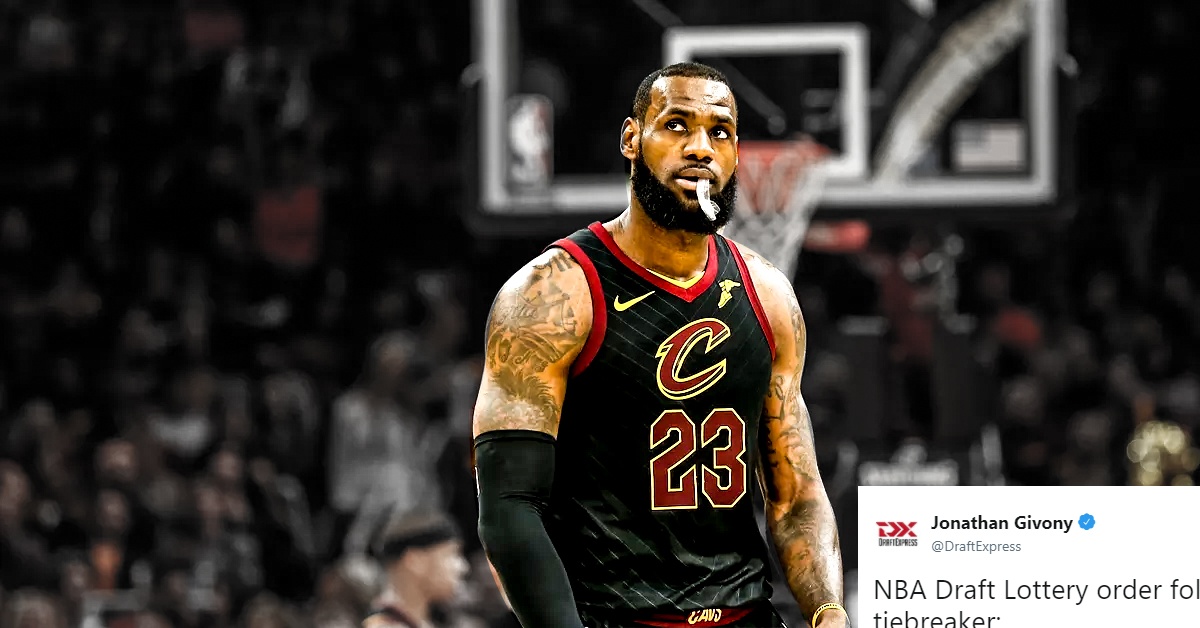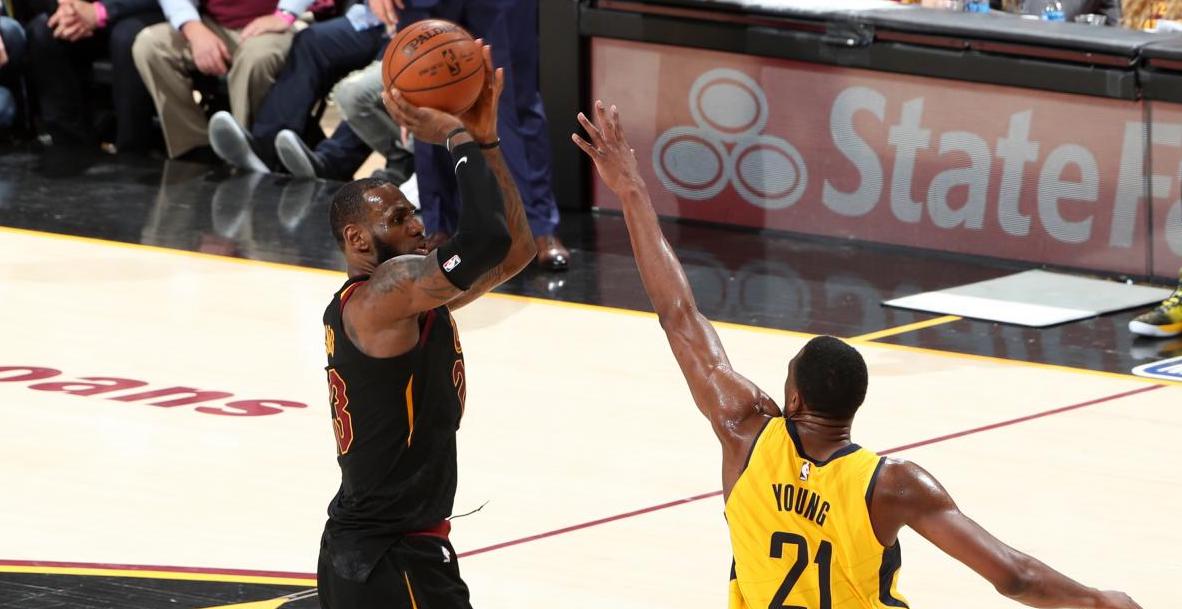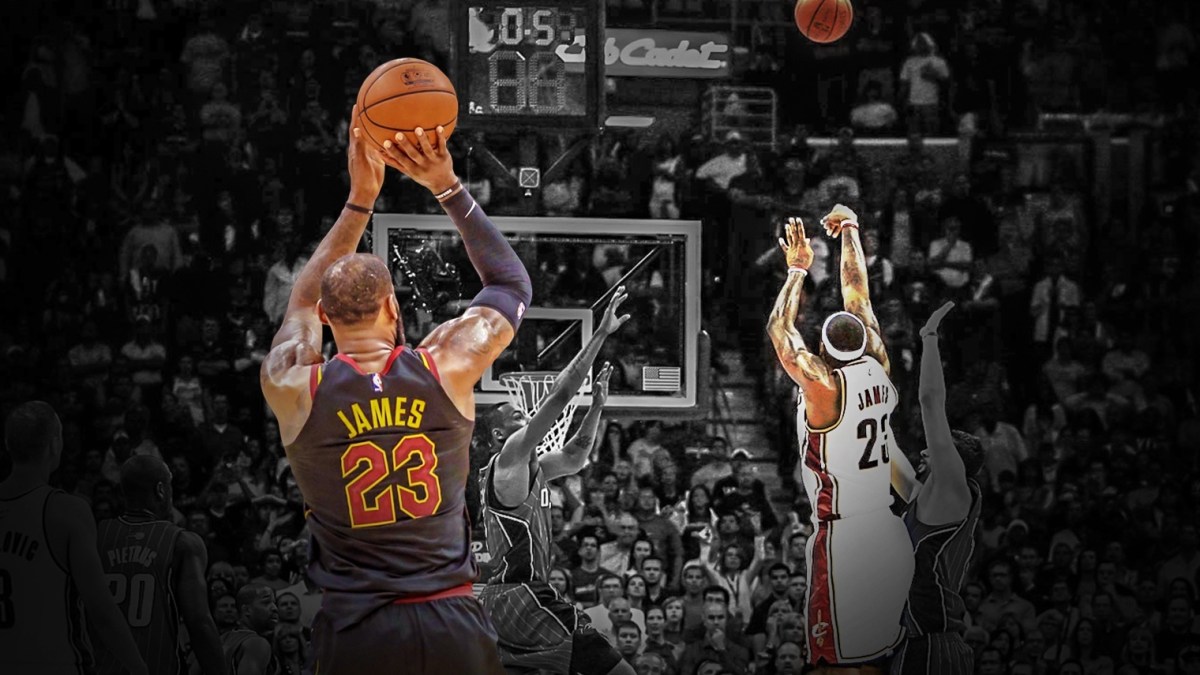On Sunday, the Cleveland Cavaliers edged out the Indiana Pacers to finish out a grueling seven-game first-round playoff series and advance to round two, where they will face the Toronto Raptors. Game 7 was exciting but the best moment of the series came in Game 5, when LeBron James gave the Cavs a 3-2 series lead by hitting an off-balance three-pointer as time expired.
He made a similar shot eight years earlier against the Orlando Magic, so here’s a closer look at how they match up with each other.
Surrounding context

The first thing to address is the situation around the shots.
In 2009, the Cavs were down 0-1 in the Eastern Conference Finals to the Magic. Getting into an 0-2 hole would have made winning the series incredibly difficult. Orlando ended up winning in six games anyway, but an early 2-0 lead would have made things easier for the Magic.
The Pacers and Cavs were tied at 2-2 in the first round of the playoffs. In a vacuum, this scenario is not nearly as crucial because of the round, but there was more at stake in this series. James still has yet to lose in the playoffs’ opening round, and he has played in every NBA Finals since 2011.
A loss in Game 5 would have given Indiana a chance to close out the series at home. James’ legacy would have been impacted in a negative way, and a first-round exit would have all but assured James would leave Cleveland for a second time this offseason.
The plays themselves

In the game against the Magic, Cleveland was down 95-93 with just one second remaining. There are a few ways of thinking about how to go about closing the deficit.
The first is to tie and force overtime. A two-pointer is, on paper, more likely to be made than a three-pointer. But, the Magic certainly knew this, and set up their defense to eliminate that option. There was no way a Cavs player would have been able to find an open spot close to the basket, receive the inbound pass, and put up a good shot in just one second.
The Magic’s defense forced the Cavs to go with the second option: a three-point shot to win the game outright. You may have a decreased chance at making the shot, but your shooter should be more open, at least by a little. If the shot goes in, you don’t have to play overtime, and if it doesn’t, the end result is the same as missing the two-point shot.
Through some misdirection, James was able to create a few yards of space in between himself and Hedo Turkoglu, which allowed Mo Williams to inbound the ball safely. James jumps to catch the pass, lands on his feet, and immediately has to jump back up and get the shot off with Turkoglu’s hand in his face.
Moving to his left, this is an incredibly difficult shot for James to make. Before that attempt, he had not made a three-point shot in that game and shot 34% from deep all season. But James was the Cavs’ leader, and he was the obvious choice to take the final shot.
Against Indiana, the Cavs were tied. This meant that the consequences of missing the shot were much, much lower than against Orlando. But, making the shot would still have a great benefit.
This time, the Cavs had three seconds left to run a play, which is like an eternity at the end of a basketball game. Kyle Korver was the only other legitimate option to take the shot, but the Cavs decided to use him as a decoy, and it worked. If Kyrie Irving was still on the team, he would’ve had as much claim to the responsibility as James.
But James has been Cleveland’s only consistently dependable player this year, and with his three-point percentage of 37% this season, it was a good choice.
When James received the inbound pass, he had quite a bit of space to work with. Thaddeus Young tripped around a screen set by Korver and didn’t regain his close defensive press until James put up his shot. James took his time and chose to repeat what had worked for him in the past. He drifted to his left, jumped and shot a fade-away three. By the time Young got his hand in James’ face, the ball had already left his hands.
One of the biggest differences between the shots is that in first, time expired almost immediately after James released the ball. But in the second, the buzzer did not sound until the ball had entered the rim. It’s safe to say that, while both shots are extremely impressive, the 2009 game-winner against Orlando was the more difficult attempt.
The Cavs were unable to channel the momentum from James’ buzzer-beater into Game 6, but it no longer matters, as the Cavs have advanced to the second round. While it would be exciting, let’s hope James doesn’t have to make another game-winner anytime soon.
